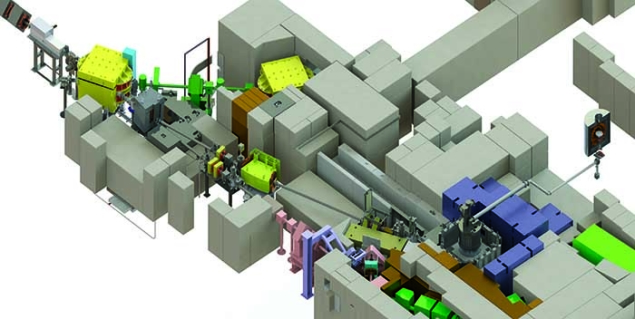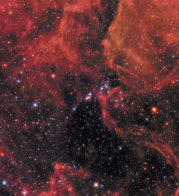
Researchers at TRIUMF in Canada have reported the first production of ultracold neutrons (UCN), marking an important step towards a future neutron electric dipole moment (nEDM) experiment at the Vancouver laboratory. Precision measurements of the nEDM are a sensitive probe of physics beyond the Standard Model: if a nonzero value were to be measured, it would suggest a new source of CP violation, possibly related to the baryon asymmetry of the universe.
The TUCAN collaboration (TRIUMF UltraCold Advanced Neutron source) aims to measure nEDM a factor 30 better than the present best measurement, which has a precision of 3 × 10–26 e cm and is consistent with zero. For this to be possible, physicists need to provide the world’s highest density of ultracold neutrons. In 2010 a collaboration between Canada and Japan was established to realise such a facility and a prototype UCN source was shipped to Canada and installed at TRIUMF in early 2017.
The setup uses a unique combination of proton-induced spallation and a superfluid helium UCN source that was pioneered in Japan. A tungsten block stops a beam of protons, producing a stream of fast neutrons that are then slowed in moderators and converted to ultracold speeds (less than around 7 ms–1) by phonon scattering in superfluid helium. The source is based on a non-thermal down-scattering process in superfluid helium below 1 K, which gives the neutrons an effective temperature of a few mK. The ultracold temperature is below the neutron optical potential for many materials, which means the neutrons are totally reflected for all angles of incidence and can be stored in bottles for periods of up to hundreds of seconds.
Tests late last year demonstrated the highest current operation of this particular source, resulting in the most UCNs it has ever produced (> 300,000) in a single 60-second-long irradiation at a 10 µA proton beam current. This is a record for TRIUMF, but the UCN source intensity is still two orders of magnitude below what is needed for the nEDM experiment.
Funding of C$15.7 million to upgrade the UCN facility, a large proportion of which was granted by the Canada Foundation for Innovation in October 2017, will enable the TUCAN team to increase the production of neutrons at higher beam current to levels competitive with other planned nEDM experiments worldwide. These include proposals at the Paul Scherrer Institute in Switzerland, Los Alamos National Laboratory in the US, the Institut Laue–Langevin in France and others in Germany and Russia. The neutron EDM is experiencing intense competition, with most projects differing principally in the way they propose to produce the ultracold neutrons (CERN Courier September 2016 p27).
The nEDM experimental campaign at TRIUMF is scheduled to start in 2021. “The TRIUMF UCN source is the only one combining a spallation source of neutrons with a superfluid helium production volume, providing the project its uniqueness and competitive edge,” says team member Beatrice Franke.





